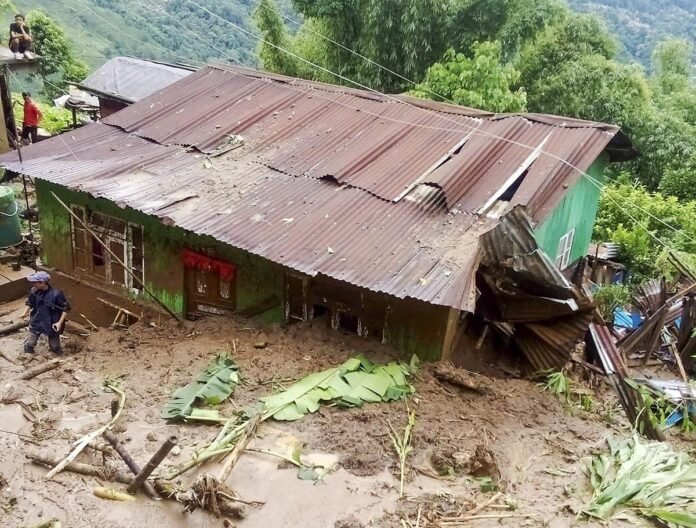At least 23 people, including women and children, have lost their lives after relentless rainfall triggered massive landslides across Mirik and Darjeeling sub-divisions in north Bengal. The torrential downpour began late Saturday night and continued into Sunday morning, washing away roads, damaging homes, and cutting off key routes connecting the hill districts with the plains.
Officials from the Gorkhaland Territorial Administration (GTA) confirmed that 11 people were killed in Mirik and 12 in Darjeeling. The landslides occurred in multiple areas including Sukey Pokhri, Jorebunglow, Maneybhanjyang, and Darjeeling Sadar. Several families were buried under debris as houses collapsed amid the rain-triggered disaster.
The situation has left large parts of the region isolated. A section of the Dudiya iron bridge over the Balasan river collapsed, disrupting communication between Siliguri and Mirik. Several highways connecting Darjeeling hills to Siliguri remain blocked due to landslides and overflowing streams.
The GTA has suspended all tourism activities in the hills, leaving thousands of Puja vacationers stranded. The India Meteorological Department (IMD) has issued a red alert for extremely heavy rainfall across sub-Himalayan West Bengal, including Darjeeling and Kalimpong, warning of further landslides and road blockages till October 6.
Chief Minister Mamata Banerjee urged tourists to remain in safe locations until rescued and assured that the government would bear all rescue and evacuation costs. She revealed that north Bengal recorded over 300 mm of rainfall within just 12 hours on Saturday night, aggravated by heavy water flow from Bhutan and Sikkim. Banerjee, along with the Chief Secretary, is visiting the affected districts today to review the damage and oversee relief operations.
Prime Minister Narendra Modi said the Centre is closely monitoring the situation and coordinating with state authorities for relief efforts. Congress president Mallikarjun Kharge also expressed concern and urged the Union government to extend all possible assistance to West Bengal and Sikkim.
Three National Disaster Response Force (NDRF) teams have been deployed, including one in severely-hit Mirik, while State Disaster Response Force (SDRF) and Army units remain on standby.
Meanwhile, Bhutan’s National Centre for Hydrology and Meteorology has issued a high alert, warning that the Tala Hydropower Dam in Chukha district is overflowing after its gates failed to open, potentially worsening flood conditions downstream in north Bengal.
Several rivers — including Teesta, Torsa, Jaldhaka, and Balasan — are flowing above danger levels, inundating low-lying areas of Jalpaiguri, Matigara, and Alipurduar. Railway connectivity has been disrupted, and in some areas, forest guards used elephants to rescue stranded tourists as national parks flooded and wildlife fled to higher ground.
With thousands displaced and rescue operations underway, the focus now shifts to restoring connectivity, providing relief to affected families, and preventing further casualties as rains continue to lash the region.



